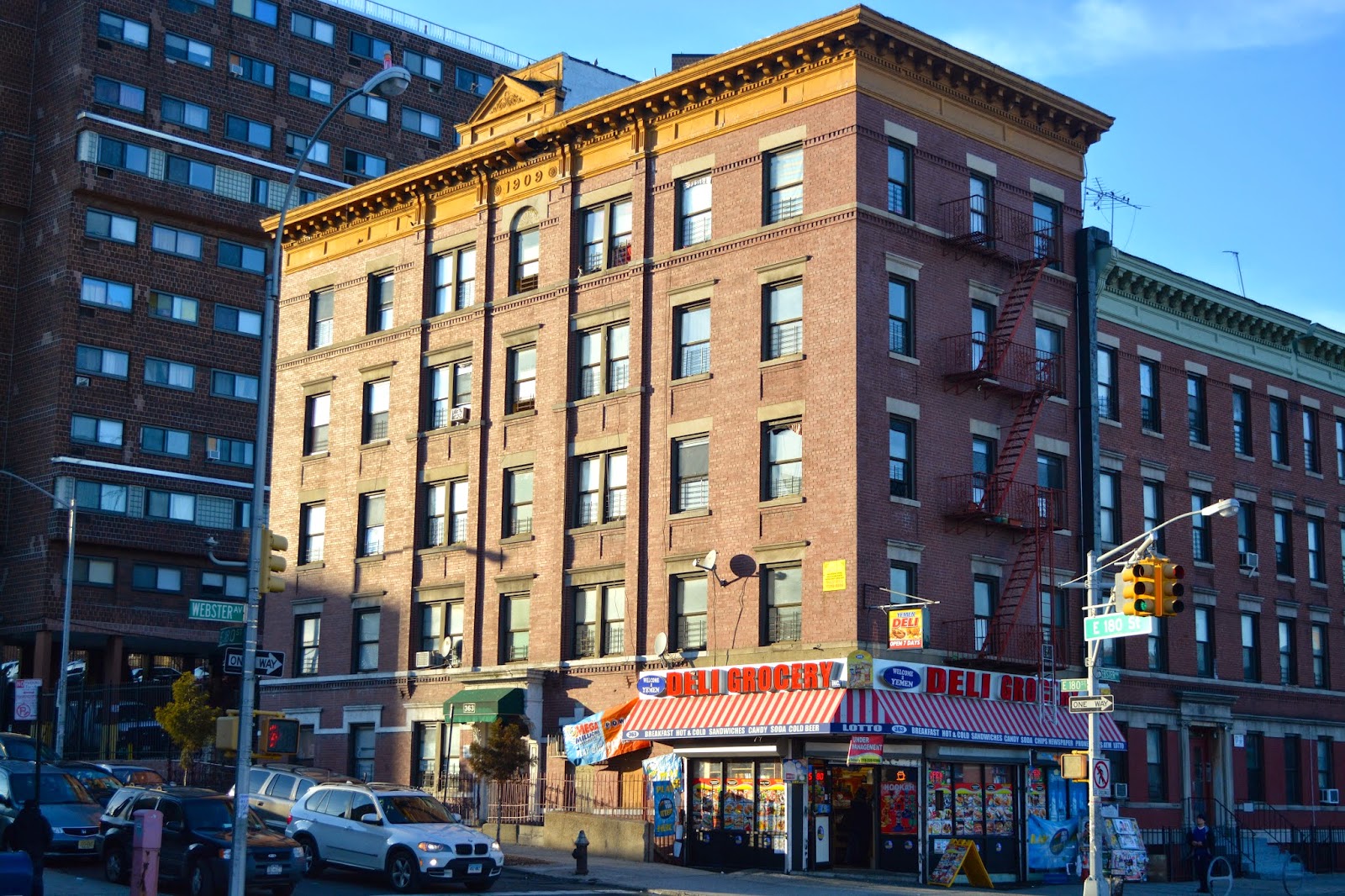It was then--it is now no more.
El Rancho Restaurant. Formerly New York Savings Bank. Formerly Bronx Savings Bank.
It's a massive stone marble structure that dwarfs the walkups and townhomes in the neighborhood. It's Greek Columns and artistic facade almost look as if they were built yesterday; the sparkling marble reflects the sunlight and brightens the sidewalk and street. Constructed at the height of the Great Depression, the message of this building is clear: Your money is safe with us.
This relic of a vaunted financial institution stands at the intersection of East Tremont and Park Avenue. That's right. Park Avenue. From the other side of the Harlem River stretching all the way to Fordham Road in the Bronx lies New York City's other Park Avenue. 429 East Tremont Avenue is perhaps the most spectacular structure in this 3.5 mile stretch of road.
 |
| Bronx Savings Bank, circa 1945. |
 |
| After decades of neglect, signs of wear and tear. |
But when we saw this bank in East Tremont, there was little mystery. The neighborhood's decline has been well documented. In the 1940s and early '50s, East Tremont was a haven of lower middle-class Jews who could escape the poverty of the Bowery Slums. They have moved up in the world, literally and figuratively. Some still worked in Manhattan, others quickly found jobs in their new neighborhood. Some worked at the department store, the deli, and yes, the neighborhood savings bank. That all changed when New York City's Master Builder, Robert Moses, decided to route a major highway right through the heart of the neighborhood.
 |
| Typical East Tremont apartments. The cast-iron facades are painted give an appearance of affluence. |
 |
| Vicente Medina surveys El Rancho, shortly before its grand opening in 2004. |
City Island is a fairly prosperous neighborhood. East Tremont is not. El Rancho is no more. The artwork from restaurant is peeling, its gaudy, diner-style shiny, glass-covered everything is falling to pieces, and water damage is eating away at the ceiling. It's over for El Rancho.
 |
| Glitter and broken dreams are all the remains of El Rancho Restaurante. |
 |
| What does the future hold? |

No comments:
Post a Comment